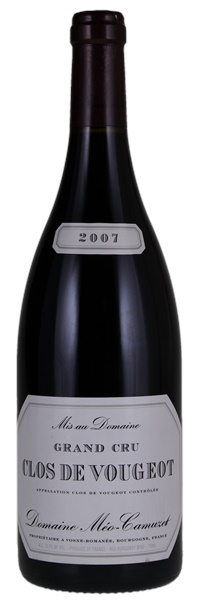Estimate

Shows fine purity, with bright red cherry, blackberry and mineral notes, all backed by a vibrant structure. Muscular tannins emerge on the finish, suggesting another few years of aging.
...expansive, lush, decidedly sweet palate, yet one that preserves a fresh, juicy component and a transparency to stony mineral notes and spicy nuances...
...supple, round, fresh and detailed middle weight flavors that culminate in a linear and highly persistent finish that is perhaps less austere than it usually is. A Clos de Vougeot of finesse rather than power and muscle.
Shy but complex nose hints at berries, mocha, menthol and roasted nuts. Silky and suave in the mouth, with nicely integrated acidity and rather fine-grained, building tannins giving grip to this rather subtle wine.